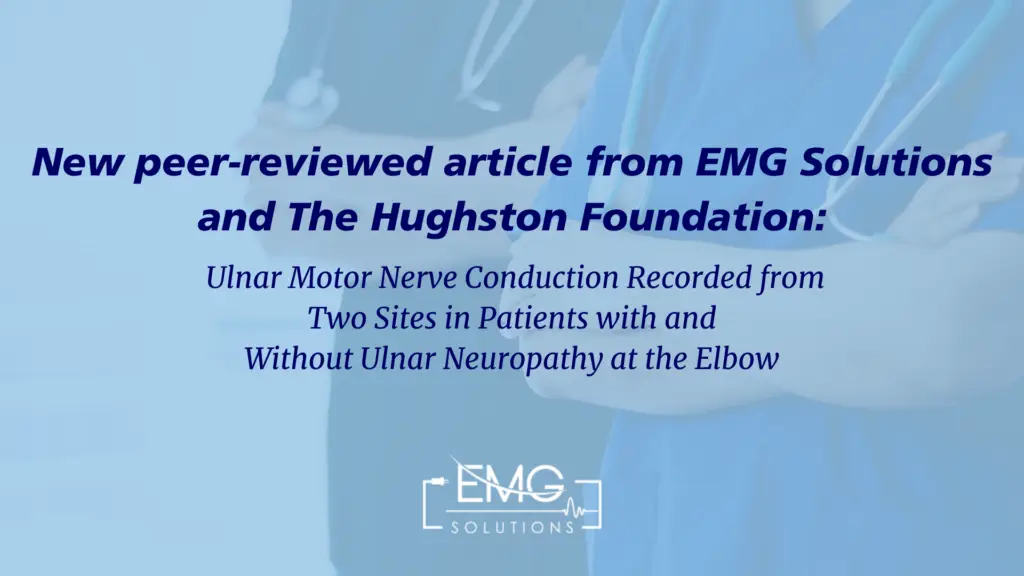EMG Solutions, a company specializing in electrodiagnostic (EDX) testing services, has always dedicated
itself to the advancement of knowledge and skills in clinical electromyography (EMG) and nerve
conduction studies (NCS). In 2022, EMG Solutions partnered with The Hughston Foundation to pursue
original research and publication opportunities in the area of electroneuromyography. This partnership
meshes perfectly with EMG Solutions’ core values to elevate our providers’ knowledge base and skill,
which in turn will elevate the profession as a whole. EMG Solutions and The Hughston Foundation are
excited to announce the publication of our first peer-reviewed article comparing ulnar motor nerve
studies recorded from the first dorsal interosseous muscle versus recording from the abductor digiti
minimi muscle. The publication was recently published in the Journal of the Academy of Clinical
Electrophysiology and Wound Management (JCEWM).
Ulnar Motor Nerve Conduction Recorded from Two Sites in Patients with and Without Ulnar Neuropathy at the Elbow
Austin S. Andrus, PT, DPT, ECS1, Andrew Ko, BS2, Quinn Millington, PT, DPT, ECS, OCS1, Mark
Simmons, PT, DPT, DSc, ECS1, Darin White, PT, DPT, ECS1, Kelcey Dunaway, DO3, David C. Rehak,
MD3
1 EMG Solutions, Alabama, USA
2 Hughston Foundation, 6262 Veterans Parkway, Columbus, USA
3 Orthopedic Surgery, Hughston Clinic, 6262 Veterans Parkway, Columbus, USA
- Purpose: Past practice standards for assessment of ulnar neuropathy at the elbow (UNE) recom-mended use of motor nerve conduction studies (NCS) recorded from the abductor digiti minimi (ADM), but some research suggests that ulnar motor nerve axons to the first dorsal interosseous (FDI) may be more prone to injury, making that muscle a superior recording site. To better under-stand differences in motor nerve conduction based on recording site, we compared conduction pa-rameters recorded from the FDI and ADM in patients with and without UNE. –
- Methods: Ulnar motor NCS measurements from the ADM and FDI were retrospectively collected from two patient groups: 1) Those without electrophysiologic evidence of UNE (133 limbs) and 2) Those with evidence of UNE (46 limbs). Collected measurements were motor nerve conduction ve-locity (MNCV) across the forearm and elbow and the difference between forearm and elbow MNCV. Within each group, ADM and FDI recordings were compared using
Paired Samples T-tests. The Holm correction was applied to minimize error from multiplicity of testing. Significance was as-sessed at alpha=0.05. - Results: In patients without UNE, MNCV was ≈1 m/s slower to the FDI than to the ADM across the forearm (p=0.003) and elbow (p=0.010). No significant differences were observed between recording sites in patients with UNE.
- Conclusions: Despite marginally slower conduction velocities recorded from the FDI in patients without ulnar pathology, UNE does not appear to preferentially affect MNCV based on recording site. Both recording methods are accurate and appropriate for assessing the magnitude of demye-lination in UNE cases.
- Keywords: Nerve conduction studies, Ulnar neuropathy at the elbow, Cubital tunnel syndrome, First dorsal interosseous, Abductor digiti minimi



